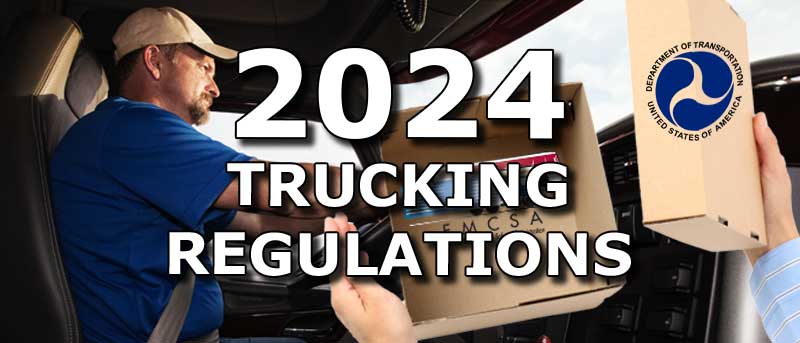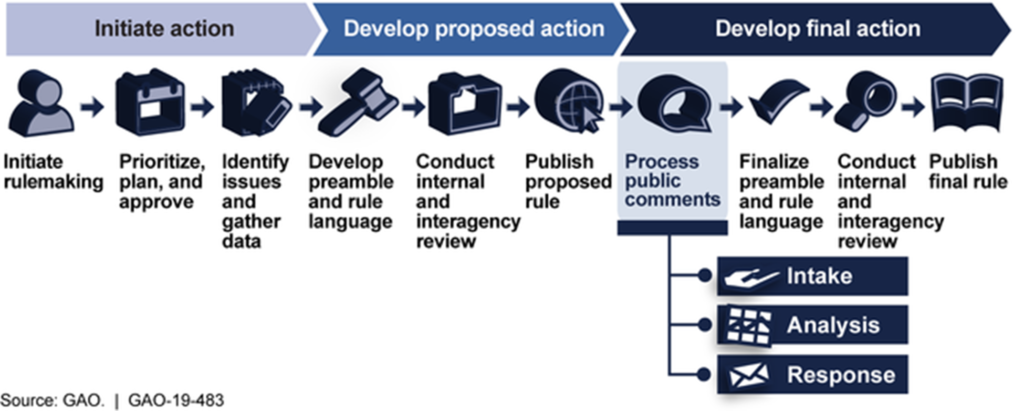How Fleets Can Easily Remove Crash Preventability Off CSA Scores
CNS can help with our Roadside & Incident Report Management service where a team of DOT Compliance Specialists will assess the Department of Transportation safety records
We are a team of DOT Compliance and Licensing Professionals helping trucking and transportation companies remain safe, compliant, and profitable.
CNS or Compliance Navigation Specialists is DOT Compliance company that assists trucking and transportation companies remain DOT Compliant. We are part of a network of companies, CNS Companies, specializing in services related to the transportation, manufacturing, construction, service, education and medical industries.

A full-scale DOT Compliance Program managing a long haul carrier’s safety, compliance, licensing and more.
Learn more >>>
A DOT Compliance Program that keeps motor carriers compliant with the 6 Basic DOT Regulations required of all carriers.
Learn more >>>
Our Short-Haul/Construction Program is a full-scale program designed for private carriers that do not haul for-hire.
Learn more >>>
Our most comprehensive DOT Compliance Program, operating as your company’s off-site Safety Director or assisting your current safety personnel.
Learn more >>>
Our Non-CDL Program is a full-scale program managing safety, compliance, licensing and more for moving companies, couriers, landscapers, or any company subject to DOT regulations and does not employ CDL drivers.
Learn more >>>
Our DOT Audit Services cover a number of different types of DOT Audits that new and existing carriers will be subject to.
Our DOT Driver Services help trucking companies and carriers to stay compliant as they grow and hire more drivers.
Our DOT Vehicle Services focus on ensuring your vehicles are compliant with DOT Regulations, which is just as important as your drivers.
Our DOT Services for Special Carriers focus on companies outside of the typical motor carrier, like HAZMAT, Passenger and Bus Carriers.
CNS is part of a group of companies that offer other necessary services for the trucking and transportation industry, such as Commercial Trucking Insurance, CDL Training, Online Training Course, and even Healthcare.
Our DOT Licensing Services will cover you whether you are an existing company or just starting a trucking company. Our DOT Licensing Specialists can help you get up and running and in days with your DOT number, MC Authority, EIN, UCR, IFTA, 2290 HVUT, Fuel Taxes and can even set you up to get your Commercial Driver's License (CDL) with CNS Driver Training Center.
Our DOT Licensing Specialists will help you with every aspect of starting a trucking company. All you need to do is choose a name for your trucking company.
You will need to ensure your DOT Number, MC Authority, Vehicle Registration, etc. is all set up properly when you start your trucking business.
Our Licensing Specialists can help with all aspects of filing and renewing licenses, fuel taxes, etc.
CNS is part of a group of companies that offer other necessary services for the trucking and transportation industry, such as Commercial Trucking Insurance, CDL Training, Online Training Course, and even Healthcare.
CNS can help with our Roadside & Incident Report Management service where a team of DOT Compliance Specialists will assess the Department of Transportation safety records
CNS or Compliance Navigation Specialists is DOT Compliance company that assists trucking and transportation companies remain DOT Compliant. We are part of a network of companies, CNS Companies, specializing in services related to the transportation, manufacturing, construction, service, education and medical industries.
CNS Companies is a network of companies specializing in services related to the transportation, manufacturing, construction, service, education and medical industries. Our DOT Compliance division is handled by Compliance Navigation Specialists, CNS Insurance handles Commercial Truck Insurance, CDL training is managed by the CNS Driver Training Center and healthcare is managed by CNS Occupational Medicine.
We are a team of DOT Compliance and Licensing Professionals helping trucking and transportation companies remain safe, compliant, and profitable.
CNS or Compliance Navigation Specialists is DOT Compliance company that assists trucking and transportation companies remain DOT Compliant. We are part of a network of companies, CNS Companies, specializing in services related to the transportation, manufacturing, construction, service, education and medical industries.

A full-scale DOT Compliance Program managing a long haul carrier’s safety, compliance, licensing and more.
Learn more >>>
A DOT Compliance Program that keeps motor carriers compliant with the 6 Basic DOT Regulations required of all carriers.
Learn more >>>
Our Short-Haul/Construction Program is a full-scale program designed for private carriers that do not haul for-hire.
Learn more >>>
Our most comprehensive DOT Compliance Program, operating as your company’s off-site Safety Director or assisting your current safety personnel.
Learn more >>>
Our Non-CDL Program is a full-scale program managing safety, compliance, licensing and more for moving companies, couriers, landscapers, or any company subject to DOT regulations and does not employ CDL drivers.
Learn more >>>
Our DOT Audit Services cover a number of different types of DOT Audits that new and existing carriers will be subject to.
Our DOT Driver Services help trucking companies and carriers to stay compliant as they grow and hire more drivers.
Our DOT Vehicle Services focus on ensuring your vehicles are compliant with DOT Regulations, which is just as important as your drivers.
Our DOT Services for Special Carriers focus on companies outside of the typical motor carrier, like HAZMAT, Passenger and Bus Carriers.
CNS is part of a group of companies that offer other necessary services for the trucking and transportation industry, such as Commercial Trucking Insurance, CDL Training, Online Training Course, and even Healthcare.
Our DOT Licensing Services will cover you whether you are an existing company or just starting a trucking company. Our DOT Licensing Specialists can help you get up and running and in days with your DOT number, MC Authority, EIN, UCR, IFTA, 2290 HVUT, Fuel Taxes and can even set you up to get your Commercial Driver's License (CDL) with CNS Driver Training Center.
Our DOT Licensing Specialists will help you with every aspect of starting a trucking company. All you need to do is choose a name for your trucking company.
You will need to ensure your DOT Number, MC Authority, Vehicle Registration, etc. is all set up properly when you start your trucking business.
Our Licensing Specialists can help with all aspects of filing and renewing licenses, fuel taxes, etc.
CNS is part of a group of companies that offer other necessary services for the trucking and transportation industry, such as Commercial Trucking Insurance, CDL Training, Online Training Course, and even Healthcare.
CNS can help with our Roadside & Incident Report Management service where a team of DOT Compliance Specialists will assess the Department of Transportation safety records
CNS or Compliance Navigation Specialists is DOT Compliance company that assists trucking and transportation companies remain DOT Compliant. We are part of a network of companies, CNS Companies, specializing in services related to the transportation, manufacturing, construction, service, education and medical industries.
CNS Companies is a network of companies specializing in services related to the transportation, manufacturing, construction, service, education and medical industries. Our DOT Compliance division is handled by Compliance Navigation Specialists, CNS Insurance handles Commercial Truck Insurance, CDL training is managed by the CNS Driver Training Center and healthcare is managed by CNS Occupational Medicine.

The federal government has been very vocal about big regulatory changes, no matter the outcry from trucking associations (like ATA or OOIDA) or drivers.
But, in case you have missed these announcements, here is what’s on the minds of federal trucking regulators in 2024 and beyond.
You can find a list of all items on the Unified Regulatory Agenda, but we provide the context and timelines here, so let’s dive in.
The regulatory process must give the public time to weigh in and take comments into consideration before making final revisions. This is your time to make your voices heard.
To submit your comment online, go to http://www.regulations.gov and enter the docket number in the search tool, click “Comment,” and type your comment into the text box on the following screen and click “Submit”.
If you have any questions, call or email CNS at 888.260.9448 or info@cnsprotects.com.

Clearinghouse Return-to-Duty Process for CDL Drivers
A driver with a drug and alcohol program violation is prohibited from performing safety-sensitive functions, including operating CMVs, for any DOT-regulated employer until the return-to-duty process is complete.
Beginning November 18, 2024, as part of new Federal regulations, drivers with a “prohibited” status in FMCSA’s Drug and Alcohol Clearinghouse will lose or be denied their State-issued commercial driving privileges.
FMCSA recently added a new resource to the Clearinghouse Learning Center that outlines the return-to-duty process that drivers with a “prohibited” Clearinghouse status must complete so they can get their status back to “not prohibited.”
For more information about the return-to-duty process, visit the Clearinghouse Learning Center or frequently asked questions.
UCR Fees Anticipating Increase in 2024
The UCR program requires ALL carriers (private, exempt, or for-hire) to register their business with a participating state and pay an annual fee that is based on the size of their fleet.
Following the 31% decrease in UCR fees for 2023, the FMCSA announced in a Federal Register notice that it is reducing fees an additional 9% as part of the Unified Carrier Registration (UCR) Plan for the 2024 registration year.
However, this may be the end of the reduced fees.
The UCR Plan Board did not make a fee recommendation for the 2025 registration year, but the recommendation for the 2024 registration year anticipates an increase in fees for 2025.
Our UCR filing service processes your new UCR or your renewal, quickly and accurately. We will file the paperwork and determine the fees, so you can stay focused on your vision for your carrier business.
California AB5 Independent Contractor Legal Battle
California’s AB5 legal battles that covers an estimated 70,000 owner-operators are far from over.
In April 2021, the first injunction to fight the law from affecting the trucking industry was overturned by an appellate court.
Next comes a request for a new injunction to block AB5 from being implemented against trucking while California is arguing that AB5 is not having an impact in the industry.
A hearing on the arguments is set for Nov. 13 before Judge Benitez, who sits in San Diego.
Fix DataQ System When Reviewing Appeal Requests
In September, FMCSA proposed the development and implementation of a federal appeals process for Requests for Data Review (RDRs) submitted to the agency through its DataQ system.
The problem they are trying to solve is the fact that most DataQ appeals are decided by the same state law enforcement agency that initially wrote the violation.
This is potentially good news for the DataQ system where, if you notice incorrect information in your PSP report or the CSA Safety Measurement System (SMS), companies and drivers can fight and remove these records that could be keeping your scores or insurance rates high.
Comment period ends Nov 13, 2023.
CMVs Electronic IDs
FMCSA is considering a rulemaking to require all CMVs operating in interstate commerce to have an electronic ID system capable of wirelessly communicating a unique ID number when queried by a Federal or State motor carrier safety enforcement personnel.
The goal of this electronic ID would be “to improve the efficiency and effectiveness of the roadside inspection program by more fully enabling enforcement agencies to focus their efforts at high-risk carriers and drivers.” In other words, this effort would help Level 8 inspections become capable in catching unsafe or non-compliant carriers.
Comment period ended in Nov 2022 and a proposed rule is expected November 2023 but may drift into 2024.
Speed Limiters
At the end of September, FMCSA published a supplemental notice of proposed rulemaking that, if enacted, would limit heavy trucks to 68 mph on highways. Boy, was there backlash!
The next day, the agency changed phrasing and now says an exact speed limit will be determined later.
The only consensus is most large-truck equipment manufacturers already added the technology needed for speed-limiters to become a reality since OEMs have been installing electronic engine control units (ECUs) in CMVs since 2003.
FMCSA estimates that limiting heavy vehicles to 68 mph would save 27 to 96 lives annually and prevent 30 to 106 serious injuries and 560 to 1,987 minor injuries.
The other added benefit is FMCSA expects that 68 mph speed limiters would improve fuel savings and GHG emissions reductions to result in benefits of $376 million annually, which seems inaccurate if you consider the smaller cars backed up behind semi’s trying to pass each other or cars accelerating past the slower than flow of traffic truckers.
The rulemaking requires the Office of Management and Budget review before publication. A Supplemental Advance Notice of Proposed Rulemaking is expected May 2024, but will likely not see it affect drivers until 2025-2026.
Automated Driving Systems
This rule proposes to amend certain regulations to ensure the safe introduction of automated driving systems (ADS) equipped commercial motor vehicles.
The proposed changes to CMV operations, inspection, repair, and maintenance regulations prioritize safety and security, promote innovation, foster a consistent regulatory approach to ADS-equipped CMVs, and recognize the difference between human operators and ADS.
FMCSA needs more data on ADS-equipped CMVs to understand the human factors surrounding team driving applications between humans and ADS-equipped CMVs.
So, in June, FMCSA invited comments on a driving simulator study with a series of questionnaires that will quantify the safety implications of team driving applications between humans and ADS equipped CMVs.
A Supplemental Notice of Proposed Rule Making is set for March 2024.
Strict 2024 Emissions Standards
In August 2022, CARB adopted a 2020 executive order from California Gov. Gavin Newsom for zero emissions by 2035, relying on vehicle technologies, such as plug-in hybrid electric-vehicles, battery-electric and hydrogen fuel cell electric, to meet air quality and climate change emissions standards.
These regulations also include increasingly stringent standards for gasoline cars and heavier passenger trucks to continue to reduce smog-forming emissions.
Pennsylvania’s Rolling Diesel Regulations automatically incorporated changes to the California Code, which now imposes a schedule of progressively more stringent emission standards for Model Year 2024−2031 vehicles.
Regarding 2022−2026 model year engines, new California Code standards are changing warranty coverage for up to 110,000, 150,000, or 350,000 miles—depending on the weight class of the vehicle, up from the first 100,000 miles.
Learn more: Lawsuit: PA Trucking Industry Fighting Strict 2024 Emissions Standards
Broker and Freight Forwarder Financial Responsibility
When should a dispatch service be considered a bona fide agent? What role do bona fide agents play in the transportation of freight?
Since there are differences in the definition of a broker in different sections of federal regulations, the FMCSA is aiming to stop certain dispatch services that claim to qualify as “bona fide agents” of motor carriers who are likely to be engaged in unauthorized brokerage.
In June, FMCSA issued their final guidance on the definitions of “broker” and “bona fide agent,” including guidance on the role and activities of entities referred to as “dispatch services” and the level of financial penalties for unauthorized brokerage services provided by such entities.
However, they did not address double brokering.
Final rule is expected March 29, 2024.
Automatic Emergency Braking
NHTSA believes AEB systems represent the next wave of potentially significant advances in vehicle safety.
In July, NHTSA and FMCSA published a joint proposal that would require AEB systems and electronic stability control systems on new vehicles that weigh more than 10,000 pounds.
The proposal calls for all Class 7 and 8 vehicles – those weighing more than 26,000 pounds – to be required to meet the AEB standards three years after the rule takes effect.
Hundreds of commenters opposed the proposal, but the government is scheduled to release a Final Rule by April 2024.
Updates to the Unified Registration System
FMCSA proposes to implement several provisions of the Moving Ahead for Progress in the 21st Century Act (MAP-21) that relate to the FMCSA’s Unified Registration System (URS) as well as update and codify the Agency’s procedures for granting, suspending, and revoking registration.
These procedures would apply to all entities required to register under the Agency’s commercial or safety jurisdiction. Many of the proposed provisions codify existing Agency practices, while others improve on existing processes and procedures.
FMCSA proposes this rule to achieve greater transparency, uniformity, efficiency, and predictability with respect to granting, suspending, or revoking registration.
A Notice of Proposed Rule Making is expected May 30, 2024.
New-entrant Safety Regulations Proficiency Test
Within the first 12 months of operating as a property carrier within interstate commerce, or 120 days as a passenger carrier, each carrier must undergo a New Entrant Safety Audit.
Should a new carrier know the rules BEOFRE the audit? FMCSA thinks so.
The agency is considering whether to implement a proficiency examination as part of its revised New Entrant Safety Assurance Process as well as other alternatives. In other words, new carriers may be required to take a standardized test to make sure they’re aware of and comply with federal safety regulations.
While this rulemaking was considered in 2009, it did not go anywhere. But now a Supplemental Advance Notice of Proposed Rulemaking is scheduled for July 2024.
Transparency in Property Carrier Broker Transactions
This rulemaking would amend FMCSA property carrier broker rules in response to petitions for rulemaking from the Owner-Operator Independent Drivers Association (OOIDA) and the Small Business in Transportation Coalition (SBTC).
OOIDA requests that FMCSA require property brokers to provide an electronic copy of each transaction record automatically within 48 hours after the contractual service has been completed and prohibit explicitly brokers from including any provision in their contracts that requires a motor carrier to waive its rights to access the transaction records.
SBTC requests that FMCSA prohibit brokers from coercing or otherwise requiring parties to brokers’ transactions to waive their right to review the record of the transaction as a condition for doing business. SBTC also requests that FMCSA adopt regulatory language indicating that brokers’ contracts may not include a stipulation or clause exempting the broker from having to comply with the transparency requirement.
A Notice of Proposed Rulemaking is expected Oct 31, 2024.
Safety Fitness Procedures
In 2016, a proposed Safety Fitness Determination (SFD) rule would replace the current three-tier federal rating system of “Satisfactory, Conditional and Unsatisfactory.”
The rule would apply to any federally regulated commercial motor carriers with a single determination of “Unfit”, which would require the carrier to either improve its operations or shut down.
Public comment ends Oct 30, 2023 and a Notice of Proposed Rule Making is expected in June 2025.
While these rule changes remain uncertain and have no scheduled publication date, we are still watching what regulators are doing on these regulatory items:
If you thought the government would be out of your hair, guess again!
It’s hard to stay on top of all the rules, regulations, and changes. So, join our monthly newsletter (form below) and stay up to date on trucking industry news and receive important compliance and licensing tips.
Did you know we can be found on YouTube or any Podcast channels!
Don’t miss out. Subscribe: Apple Podcasts | Spotify | Stitcher | YouTube

CNS can help with our Roadside & Incident Report Management service where a team of DOT Compliance Specialists will assess the Department of Transportation safety records

Do you travel in or through British Columbia, Canada? There is now a speed limiter requirement affecting most heavy trucks, as of Friday April 5,

If your lights aren’t on at night, but they work, that’s no longer an OOS violation, though it’s still a violation of state laws to

California’s AB5 legal battles, that cover an estimated 70,000 owner-operators, lose another chance to block the rule. The AB5 law makes it more difficult for
Our DOT Compliance Programs ensure it is your top priority and keeps your business running.
Receive the latest transportation and trucking industry information about FMCSA and DOT Audits, Regulations, etc.

CNS can help with our Roadside & Incident Report Management service where a team of DOT Compliance Specialists will assess the Department of Transportation safety records

Do you travel in or through British Columbia, Canada? There is now a speed limiter requirement affecting most heavy trucks, as of Friday April 5,

If your lights aren’t on at night, but they work, that’s no longer an OOS violation, though it’s still a violation of state laws to
Join our monthly newsletter and stay up-to-date on trucking industry news and receive important compliance and licensing tips.
Join our monthly newsletter and stay up-to-date on trucking industry news and receive important compliance and licensing tips.